SIBU Bees
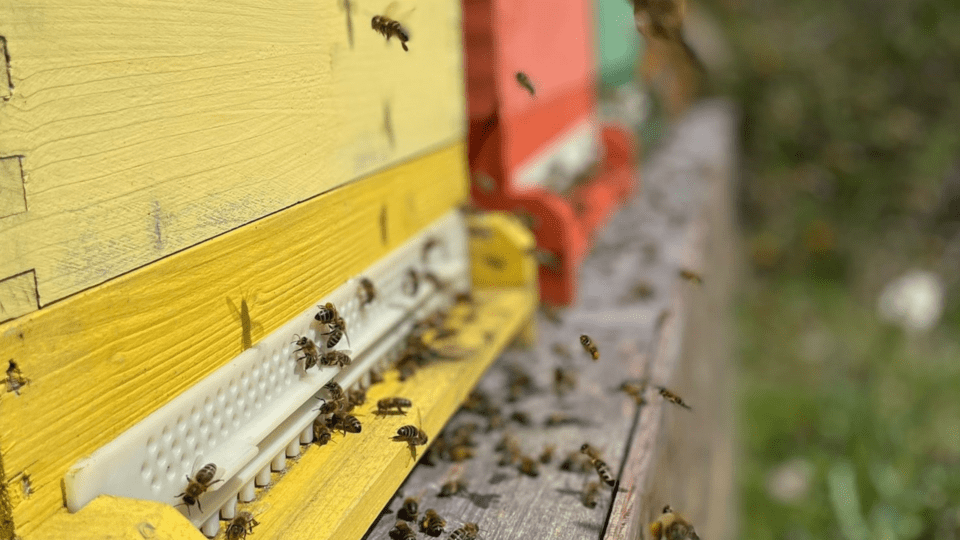
Just like a bee colony, SIBU DESIGN does not function without cohesion. Therefore, this is also our most important value and determines our daily actions and all decisions that are made. In order to set an example for the importance of this value, we decided in summer 2021 to look after a beehive with around 20,000 bees on the company premises in Ternberg. Our bees work hard and lead a distinctive social life, where everyone has a specific task, which they carry out in an extremely conscientious and well-organised manner. This is comparable to our team spirit.
We are also happy to be able to make an important contribution to environmental protection with this project.
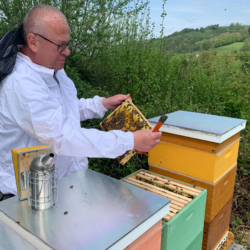
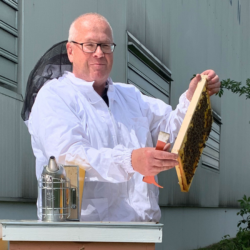
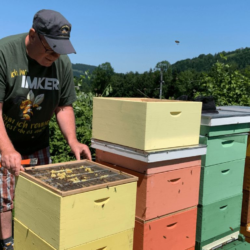
Our beekeeper
Our colleague Werner has received a lot of knowledge about beekeeping from his father since he was a child. Actually, he only wanted to return to beekeeping when he retired, but as the saying goes, opportunities are there to be seized. So, with heart and mind, he looks after our meanwhile 40,000 busy little bees and makes sure that they stay healthy. To keep up to date with the latest knowledge, he regularly attends courses on various topics, such as hygiene in the beehive, through the Beekeeping Association.
7 Facts about our bees
Fact 1
Our bees are definitely of the gentle variety and even come to “cuddle”.
Fact 2
All our bees do around 3 weeks of indoor service in the hive and 3 weeks of outdoor service collecting.
Fact 3
They produce about 15-20 kg of honey per colony, depending on the season.
Fact 4
In summer, around 40,000 bees live in our hive, in winter only 5,000.
Fact 5
We currently have 4 colonies of bees at our site and we plan to have more in the future.
Fact 6
In our bee colony there is a strong surplus of females, drones only make up a few hundred animals per hive.
Fact 7
Our beekeeper Werner recognises the ripe honey when our bees put a wax layer over the honey.
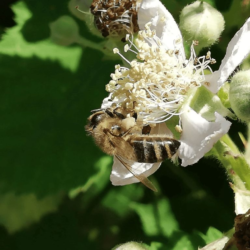
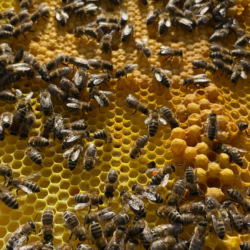
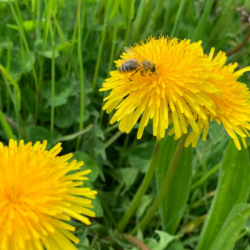
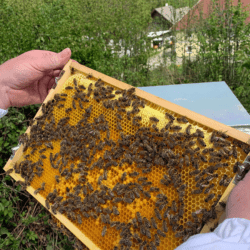
The tasks of our beekeeper Werner
January/February:
At the beginning of the year, smaller preparations are made, such as scraping off wax residues or checking whether the flight hole is blocked. Our Werner has little work with the bees per se during this time, because they are in a state of rest during these cold months. By the way, a constant cold is best for our bees.
March:
From about 10-12 °C our bees make a cleaning flight, during which they empty their excrement bladder.
Insider tip from Werner:
On the first warm days in spring, do not hang up any white laundry outside, otherwise it could be used as a bee toilet.
To find out how the bees are doing and whether they are bringing in pollen, Werner observes the flights. If necessary, they have to be fed again.
Translated with www.DeepL.com/Translator (free version)
April:
From 18-20 °C, the busy season begins, where the colony must be checked regularly. At the beginning of April or around the time of the cherry blossom, the bees get a second brood chamber, as the queen lays a lot of eggs during this time (up to 2,000/day).
Interesting facts:
Unfertilised eggs become drones, i.e. males, within 24 days and fertilised eggs become workers within 21 days. Since there should only be one queen, usually only workers are raised from the fertilised eggs.
May/June:
The colony must be observed more often to detect swarming at an early stage. The bees do not have enough space in their hive and breed a second queen. This queen leaves with about half of the hive. To avoid this, so-called swarm cells must be removed.
In addition, the first honey extraction is due at the beginning of June.
July:
Honey is extracted for the second time in mid-July. Afterwards, the animals are fed with sugar water to become strong for the winter and so that the queen can still lay numerous eggs.
August – December:
Winter feeding takes place, the honey chamber is removed and the hive is prepared for winter.
If you would like to know more about the tasks of a beekeeper, you can find further informationHERE.